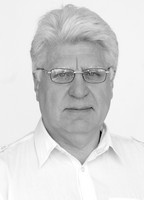Effects of ergogenic training methods on aerobic capacities of junior swimmers
Фотографии:
ˑ:
Теория и практика физической культуры №2 2017, pp.77-82
UDC 796.01:612
Dr.Hab., Professor V.R. Solomatin1
PhD, Associate Professor J.L. Voytenko1
Postgraduate A.V. Egorov1
1Russian State University of Physical Education, Sport, Youth and Tourism (GTSOLIFK), Moscow
The study was designed to assess training effects of “Capnicator” breathing trainer on the performance rates of 15-17-years-old swimmers. Subject to the experiment were 36 highly skilled swimmers. Prior to and after the training cycle the subjects were tested by laboratory tests including the treadmill graded exercise test and submaximal treadmill exercise test, with a variety of test rates being measured in the process including VO2max, VE, ExcCO2 etc. It was found that the respiratory system application in the pre-season helped notably increase the aerobic and anaerobic work capacities of junior swimmers and thereby improve their competitive success rates in the middle- and long-distance events.
Keywords: junior swimmers, aerobic and anaerobic work capacity, capacities, ergogenic training tools.
References
- Voytenko J.L. Dinamika trenirovochnykh nagruzok i rabotosposobnosti yunykh plovtsov. Avtoref. diss. kand. ped. nauk [Dynamics of training loads and performance of junior swimmers. PhD diss. abstract]. Moscow,1985, 22 p.
- Volkov N.I. Gipoksiya i anaerobnaya proizvoditelnost sportsmenov [Hypoxia and anaerobic performance of athletes]. Akklimatizatsiya i trenirovka sportsmenov v gornoy mestnosti [Athletes' acclimatization and training in the highlands]. Alma-Ata, 1965, p. 103.
- Solomatin V.R., Bulgakova N.Zh., Zhuravik A. Srochny trenirovochny effekt i sistematizatsiya spetsialnykh trenirovochnykh uprazhneniy v zavisimosti ot urovnya razvitiya aerobnykh i anaerobnykh vozmozhnostey plovtsov vysokogo klassa [Urgent training effect and systematization of special training exercises with regard to level of aerobic and anaerobic capacities of elite swimmers]. Teoriya i praktika fiz. kultury, 1996, no. 1, pp. 37-39.
- Solomatin V.R., Vovk E. E. Otsenka perspektivnosti yunykh plovchikh na osnove ucheta ikh biologicheskoy zrelosti, fizicheskogo i funktsionalnogo razvitiya [Assessment of prospects of junior female swimmers based on their biological maturity, physical and functional development]. Fizicheskaya kultura: vospitanie, obrazovanie, trenirovka, 1997, no. 2, pp. 42-45.
- Solomatin V.R. Kriterii srochnogo trenirovochnogo effekta spetsialnykh uprazhneniy i individualizatsiya podgotovki plovtsov vysokoy kvalifikatsii [Criteria for urgent training effect from special exercises and individualization of training in elite swimming]. Teoriya i praktika fiz. kultury, 2008, no. 10, pp. 68-71.
- Solomatin V.R. Individualizatsiya mnogoletney trenirovki v sportivnom plavanii [Individualization of long-term training in competitive swimming]. Moscow: Fizicheskaya kultura publ, 2009, 241 p.
- Solomatin V.R. Srochny trenirovochny effekt i sistematizatsiya spetsialnykh uprazhneniy v zavisimosti ot urovnya razvitiya funktsionalnykh vozmozhnostey plovtsov vysokogo klassa [Urgent training effect and systematization of special exercises with regard to functionality level of elite swimmers]. Uchenye zapiski un-ta im. P. F. Lesgafta, 2009, no.10 (56), pp. 97-101.
- Solomatin V.R. Variativnost srochnykh trenirovochnykh effektov kak osnova sistematizatsii spetsialnykh uprazhneniy plovtsov [Variability of urgent term training effects as a basis for systematization of special exercises in competitive swimming]. Vestnik sportivnoy nauki, 2010, no. 2, pp. 25-27.




 Журнал "THEORY AND PRACTICE
Журнал "THEORY AND PRACTICE